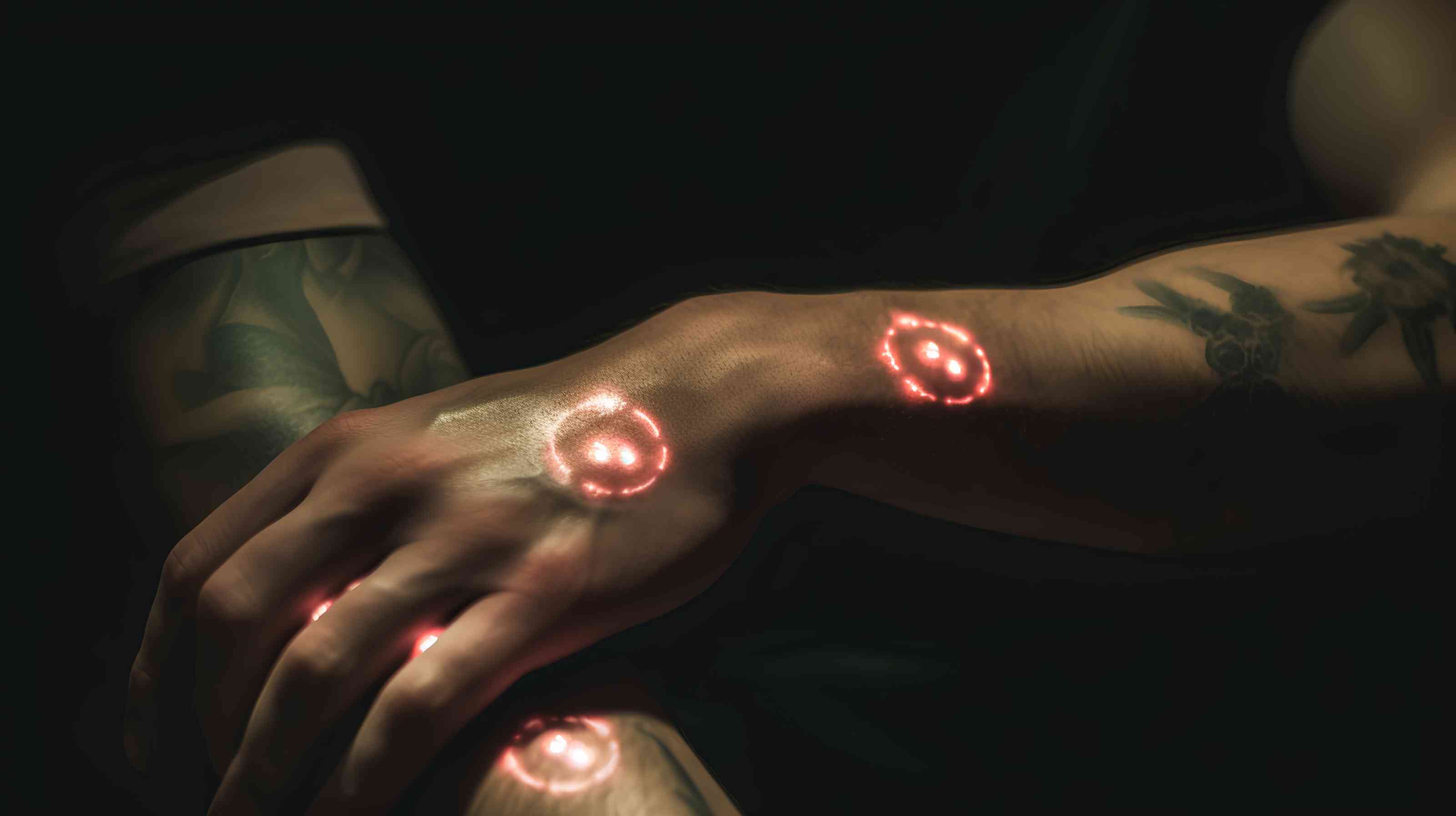Key Points
- Biohacking is a DIY-approach to innovation.
- Anyone can biohack; you don't need a scientific background.
- Biohacks can help you during early and long-term recovery.
What is biohacking? Biohacking allows scientists and nonscientists to use various techniques to alter and improve the genetic makeup of humans, plants, and other living species. By doing so, they can enhance existing characteristics or introduce new ones to create the desired result. They take a DIY approach to even some of the most advanced experiments, like DNA splicing.
Biohacking involves making lifestyle adjustments and dietary changes to enhance your body’s natural workings. For instance, altering your diet to improve your physical appearance or overall wellbeing.
Anyone interested in biohacking can become a biohacker, but many have tech, science, health, or engineering backgrounds. Artists and designers also enjoy the creative aspect of biohacking. When done safely, there’s benefits for all types of people.
Types of Biohacking
Biohacking involves many types and varieties of science. Some biohackers enjoy optimizing their body’s natural functions through health technology. Others splice and research DNA. Some also implant in-body technology to enhance their senses.
Biohackers can also work alone or in shared biohacking labs. Lab members often pay a membership fee to access lab equipment and work with other biohackers.
Nutrigenomics
Nutrigenomics studies how nutrients impact your genes and how they’re expressed1, including how nutrition can protect genomes (all the DNA in a cell). A biohacker using nutrigenomics tailors their diet to enhance their genetic makeup, protect their genes from damage, and generally learn more about genes and food. Nutrigenomics also examines how nutrition affects all the protein and metabolites in a cell.
Doing so, researchers and biohackers can learn more about how they, or members of the population, will respond to dietary changes. Biohackers can use nutrigenomics to predict what diet changes will do and adjust their diet accordingly. They “hack” the way their body responds to food to enhance their functioning and reap specific rewards.
For example, a biohacker using nutrigenomics may take and test a gene sample after eating processed food with biochemicals. (If they don’t have access to the right machinery, biohackers often send their results to another lab for processing.) Based on the results, the biohacker will know how that food affects them and how adverse/beneficial the effects are.
DIY Biology
Someone using DIY biology operates alone, usually working towards a solution with self-invented tools, modified tech, and their own resources.
Because it’s more solitary in nature, most DIY biologists have a scientific or engineering background. Their knowledge and experience allow them to tinker with biology independently, sometimes just in their garage or spare bedroom.
Many DIY biologists enjoy the freedom of doing what they want, when they want. Without any oversight, as some biohackers have when they join a shared biohacking lab, DIY biologists can create almost anything and test on themselves whenever they’d like. For example, they may implant a chip made only with parts they already had on hand.
DIY Gene Therapy
In this form of biohacking, biohackers aim to splice and change their DNA or the DNA of other organisms directly. They’ll add in and remove specific DNA blocks to create a new function or feature. For example, one biohacker created glowing plants2 by splicing plant genes and bioluminescent coding to make plants that glow.
A biohacker also bioengineered a radiation-resistant plant3. And, biohackers stitched together horsepox, a long-extinct disease, using DNA splicing. Some biohackers use gene therapy to (try to) make themselves HIV-resistant, un-lactose intolerant, have bigger muscles, and stop aging. So far, these attempts haven’t been successful, but biohackers continue to work at it.
Lifestyle Changes
Not all biohackers need scientific equipment to “hack” how their bodies work. Some less intensive, lifestyle-change-only biohacks include:
- Diet changes
- Sleep routines
- Exercise
- Supplements
- Wearable technology, like a Fitbit
- Apps that store your biometrics when inputted, including what you eat and the calories you burn
Many people have been or are a biohacker, even if they don’t deeply understand the science behind why lifestyle changes work. Someone with that knowledge will have a stronger understanding of how and why the changes occur. They can tailor their body’s response more finely than someone broadly choosing to eat healthy, for example.
Implanted Technology
Some biohackers, called grinders, aim to blend living and non-living material to enhance their senses. They implant devices, sensors, and cosmetic items4 to feel new sensations and monitor processes in their body, among other things. Some implanted devices include:
- Neodymium magnets. Biohackers implant a small neodymium magnet into their fingertip to supposedly feel electromagnetic fields like a 6th sense. Some don’t report any sensation at all. In either case, it still functions as a magnet. Those with the implant can pick up small metal objects, like bottle caps, with their fingertip. The magnet could trip certain switches to open a door, turn on a device, and activate other sensors.
- Biometric sensors. Small sensors can relay biometric information about areas and processes in the body. For example, some small chips monitor temperature and communicate via Bluetooth with phones and other devices. Biohackers also created an identifying chip to communicate an unconscious patient’s medical history with first responders.
- Lighting implants. Small light implants serve a cosmetic purpose for now, but biohackers are working to create gesture-responsive, Bluetooth-connected devices that won’t need recharging. A handful of biohackers implanted a circle of LED lights into the tops of their hands. Newer versions of the device change color through a phone app.
What Are Some Examples of Biohacking?
See examples of the different types of biohacks.
Cold Water Therapy
Cold water therapy improves circulation and can reduce depression5. The temperature of ice baths shocks your body into survival mode, causing a flush of circulated blood and increased blood flow. Cryotherapy, another cold-temperature treatment6, offers similar benefits.
The adrenaline from cold shocks can also reduce symptoms of depression and anxiety over time, though research has only loosely connected that as a benefit. Cold water therapy can also help athletes recover muscle and reduce inflammation.
Intermittent Fasting
Intermittent fasting puts stress on your cells7, which can make them more stress-resistant over time. However, one of the main benefits of intermittent fasting often comes from weight loss. Losing excess weight can help your joint health, heart, and overall functioning.
Consult with a doctor before fasting. They can help you determine a safe fasting schedule and what to eat on your feeding days.
Vagus Nerve Stimulation
Stimulating your vagus nerve can reduce depression8 and anxiety. The vagus nerve runs through part of your ear, where you can non-surgically stimulate the nerve. Acupuncture or gentle massage both stimulate the vagus nerve.
Stimulation of the vagus nerve sends electrical signals in your brain8, which can treat treatment-resistant depression and improve overall mood. And, since you can stimulate the vagus nerve anytime, it’s a useful biohack for combating in-the-moment stress.
Red Light Therapy
Right light therapy can alter and repair damaged cells9. You can target certain body parts, like facial acne scars, or experience full-body red light therapy. It can make your skin feel smoother, reduce wrinkles and fine lines, and fade scars and stretch marks.
Caffeine
Caffeine, a central nervous system stimulant, blocks the receptors for adenosine10. The chemical adenosine builds up throughout the day, causing sleepiness. Caffeine “plugs” the adenosine receptor and stimulates the central nervous system, making you feel less tired and more awake.
Drinking safe amounts of caffeine can make you feel focused and alert. You may feel more productive if you drink a cup of coffee or tea in the morning. Just be sure to moderate your intake and not have caffeine too close to bedtime.
Nootropics
Nootropics, or cognitive enhancers, are supplemental “smart drugs”11 that can improve cognitive function. Most nootropics, like a plant or pre-existing chemical compound, have a natural origin. Some biohackers use nootropics to enhance their memory, intelligence, reaction speeds, and general wellness.
Examples of nootropics11 include the compounds deanol (improves learning and memory), lecithin (improves attention and thinking), and plant products like ashwagandha (antioxidant), ginseng (mental and physical resilience), and more.
Cybernetics
Biohackers using cybernetics create cyborgs, or cybernetic organisms. Cyborgs are anyone with an in-body mechanical enhancement. For example, one colorblind biohacker found a way to “hear” color12 using a device permanently set on his forehead.
Biohackers have used cybernetics to implant sensors, one of which can unlock certain doors. One “cyborg’s” implant allows him to feel the same sensations his similarly-equipped wife feels13 on her hand, even on the other side of the ocean.
Wearable Technology
Wearable technologies like Fitbits and Apple Watches give you real-time insight into your biometrics, like your heart rate. You can also use them to track your sleep and its stages.
Wearable technology can track and store information about your nutrition, exercise habits, calories burned, and menstrual cycles. Most fitness watches will also prompt you to stand and move throughout the day. Some even detect falls and car crashes, and can alert emergency services.
These benefits can help you better understand your body, attune your diet and sleep schedule, and add extra safety for your day-to-day life.
Research on Biohacking
Biohacking connects scientists and non-scientists alike to biology of all types. It enables anyone to play with biology, down to their DNA. But its effects on the world haven’t been wildly remarkable14.
Researchers compare biohacking to the 1970s boom of self-taught computer builders and hackers, finding less advancement in biology compared to the lengths tinkerers advanced computer technology. That’s mostly because biohacking tools and materials aren’t yet as accessible as computer materials are and were.
But, that doesn’t mean biohackers could or should stop. Any biohacker could discover a life-changing breakthrough. Many argue self-DNA manipulation, for example, could lead to live-saving gene therapies2. Researchers and biohackers alike agree anyone exploring biology and technology should feel encouraged to do so.
Biohacking can and does lead to lifestyle improvements. So for some, it can be an extremely effective tool that positively changes their lives. This may be especially true for lifestyle changes, like creating a sleep routine to feel more rested and productive during the day.
Each example of biohacking has the potential to benefit lives.
What Are the Risks Associated With Biohacking?
Biohacking does pose some safety risks. Around 2009, concerns arose about what biohackers could create, and why. Some feared biological weapons. In response, the FBI sent agents to a biohacking event2, a collaboration many biohackers welcomed. Law enforcement found little bioterrorism threats as they continued to work with the biohacking community.
Risks of DIY Biology and DIY Gene Therapy
The International Gene Synthesis Consortium further protects against malevolent experiments14 by carefully monitoring what DNA sequences are purchased and by whom. They also ensure all buyers have an academic affiliation, or something similarly relevant.
The nature of shared biohacking spaces also prevents security risks. Todd Kuiken, Senior Research Scholar at the Genetic Engineering and Society Center, North Carolina State University, says, “It would be nearly impossible for someone to work on such a project in a community lab without someone noticing what they were doing and stopping it.”
Any nefarious DIY biologists would hit roadblocks regarding mass-production, storage, and distribution of a chemical weapon. Creating it in the first place, with restrictions and limits on genetic material, is just as complicated.
Risks of Implanted Technology
Implants and biotech require a skilled biohacker to build and implant. The risk of infection always exists, as does the risk of contamination from a leaking implant. Your body may also reject the implant.
Risks of Lifestyle Changes
Before you majorly adjust your diet or take supplements, consult your doctor. Some supplements could interact with each other or with your current medications. You’ll also want to ensure you’re not malnourished through intermittent fasting or other restrictive diets. See what your doctor thinks before you get started.
Is Biohacking Safe?
Usually, yes. Biohacking often is as safe as the biohacker makes it. So, if you create a new gene-based cure for gluten sensitivity and inject it into yourself without prior testing, most would see that as unsafe. But most biohackers dabble in small enhancements with plenty of testing beforehand.
In any case, biohacking has no FDA approvals or strict government testing saying it’s safe. Though that’s the appeal for many, they do put themselves at risk.
But small lifestyle changes, like wearing a Fitbit or occasional cold showers, pose little safety risks. You can decide how much safety you’re willing to risk before adopting a new bio-hack. Always consult a doctor before making major changes, or if you have questions.
Hack Your Recovery
In addiction and mental health recovery, some rehabs use biofeedback, biochemical therapy, and biohacking to enhance healing. Patients coming out of detox can find biohacking helpful for withdrawals and their overall health in recovery.
You can turn whichever form of biohacking works for you into a life-long habit for your recovery. Biohacking can help you manage low mood, recovery triggers, and physical health. Once you run changes past your doctor, biohacking also empowers you to control and understand aspects of your health.
Browse our list of rehabs with biofeedback to see photos, reviews, insurance information, and more.
-
Mead, M. Nathaniel. “Nutrigenomics: The Genome–Food Interface.” Environmental Health Perspectives, vol. 115, no. 12, Dec. 2007, pp. A582–89. PubMed Central, https://www.ncbi.nlm.nih.gov/pmc/articles/PMC2137135/.
-
“Focus On: Biohacking.” RSB, https://www.rsb.org.uk//biologist-features/focus-on-biohacking. Accessed 8 Sept. 2023.
-
Brodwin, Erin. “Biohacking Puts the Next Scientific Breakthroughs in Consumers’ Hands.” Newsweek, 1 July 2014, https://www.newsweek.com/2014/07/04/biohacking-puts-next-scientific-breakthroughs-consumers-hands-261578.html.
-
Yetisen, Ali K. Biohacking. CellPress Reviews, Aug. 2018, https://scholar.harvard.edu/files/biohacking.pdf.
-
Espeland, Didrik, et al. “Health Effects of Voluntary Exposure to Cold Water – a Continuing Subject of Debate.” International Journal of Circumpolar Health, vol. 81, no. 1, p. 2111789. PubMed Central, https://doi.org/10.1080/22423982.2022.2111789. Accessed 25 Sept. 2023.
-
“Whole-Body Cryotherapy.” Physiopedia, https://www.physio-pedia.com/Whole-body_cryotherapy. Accessed 25 Sept. 2023.
-
Collier, Roger. “Intermittent Fasting: The Science of Going Without.” CMAJ : Canadian Medical Association Journal, vol. 185, no. 9, June 2013, pp. E363–64. PubMed Central, https://doi.org/10.1503/cmaj.109-4451.
-
How Does Vagus Nerve Stimulation Work? https://www.aans.org/. Accessed 8 Sept. 2023.
-
Wunsch, Alexander, and Karsten Matuschka. “A Controlled Trial to Determine the Efficacy of Red and Near-Infrared Light Treatment in Patient Satisfaction, Reduction of Fine Lines, Wrinkles, Skin Roughness, and Intradermal Collagen Density Increase.” Photomedicine and Laser Surgery, vol. 32, no. 2, Feb. 2014, pp. 93–100. PubMed Central, https://doi.org/10.1089/pho.2013.3616
-
Reichert, Carolin Franziska, et al. “Adenosine, Caffeine, and Sleep–Wake Regulation: State of the Science and Perspectives.” Journal of Sleep Research, vol. 31, no. 4, Aug. 2022, p. e13597. DOI.org (Crossref), https://doi.org/10.1111/jsr.13597.
-
Malík, Matěj, and Pavel Tlustoš. “Nootropics as Cognitive Enhancers: Types, Dosage and Side Effects of Smart Drugs.” Nutrients, vol. 14, no. 16, Aug. 2022, p. 3367. PubMed Central, https://doi.org/10.3390/nu14163367.
-
“How Biohacking Works.” HowStuffWorks, 1 Jan. 1970, https://science.howstuffworks.com/innovation/scientific-experiments/biohacking.htm.
-
Popper, Ben. “Cyborg America: Inside the Strange New World of Basement Body Hackers.” The Verge, 8 Aug. 2012, https://www.theverge.com/2012/8/8/3177438/cyborg-america-biohackers-grinders-body-hackers.
-
Gruber, Karl. “Biohackers.” EMBO Reports, vol. 20, no. 6, June 2019, p. e48397. PubMed Central, https://doi.org/10.15252/embr.201948397.
Return to Resource Library
Our Promise
How Is RehabPath Different?
We believe everyone deserves access to accurate, unbiased information about mental health and addiction. That’s why we have a comprehensive set of treatment providers and don't charge for inclusion. Any center that meets our criteria can list for free. We do not and have never accepted fees for referring someone to a particular center. Providers who advertise with us must be verified by our Research Team and we clearly mark their status as advertisers.










